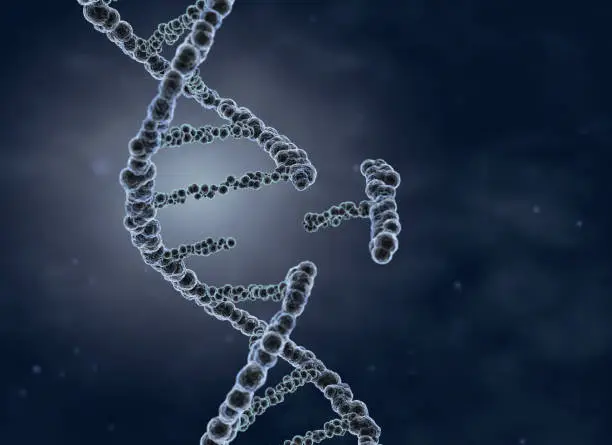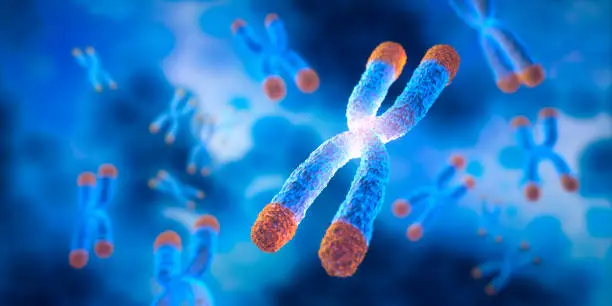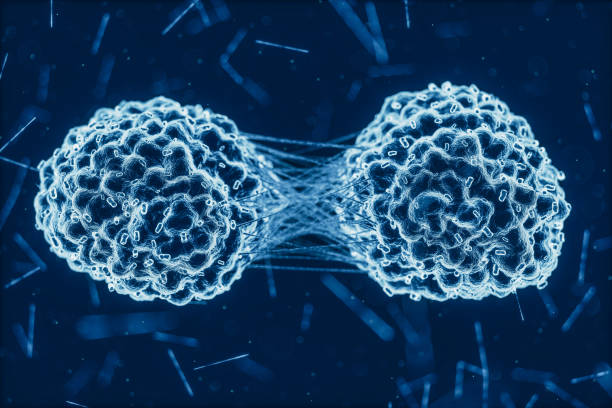DNA, often called the master blueprint of life, is the genetic code that directs the development, functioning, and reproduction of all living organisms. Maintaining the integrity of our DNA is crucial for normal cellular functions. However, DNA faces constant threats from various internal and external sources. If left unrepaired, these threats can cause mutations, genomic instability, and even cell death, which may lead to serious diseases like cancer. Fortunately, our cells have developed complex systems known as the DNA Damage Response (DDR) to detect and repair damage, preserving genomic integrity.
Understanding DNA damage and repair mechanisms is essential not only for cancer prevention but also for gaining insights into aging and genetic disorders. This knowledge is critical for developing targeted therapies and improving patient outcomes.
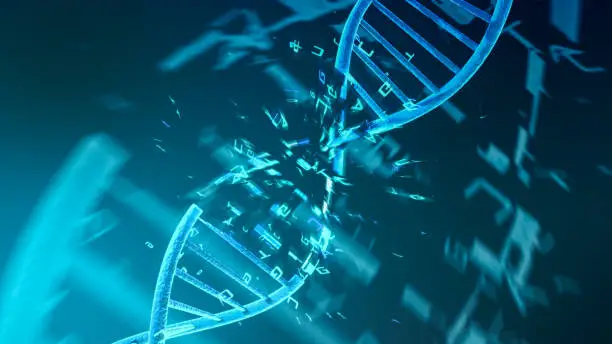
Causes of DNA Damage
DNA damage can arise from a variety of sources, both endogenous (originating within the body) and exogenous (originating outside the body):
Endogenous Sources
- Reactive Oxygen Species (ROS): ROS are byproducts of normal cellular metabolism. These molecules can react with DNA, causing significant damage if not controlled. Think of this as factory waste corroding machinery if not properly managed.
- Replication Errors: Mistakes can occur during DNA replication, leading to mismatched bases or replication fork stalling. Imagine copying a large book manually; occasional errors are inevitable.
- Spontaneous Chemical Changes: Natural chemical reactions within cells can lead to the loss or modification of DNA bases over time, similar to letters fading in an old manuscript.
Exogenous Sources
- Ultraviolet (UV) Radiation: Prolonged UV exposure from the sun can damage the DNA in skin cells, leading to mutations that increase the risk of skin cancer.
- Ionizing Radiation: X-rays and other forms of ionizing radiation can break both strands of DNA. While essential for medical imaging, these tools pose risks if not carefully controlled.
- Chemical Agents: Certain chemicals, such as those in cigarette smoke, can directly attack DNA, leading to errors during replication.
- Physical Agents: High temperatures can denature proteins and cause DNA breaks, similar to how heat can warp and damage physical materials.
Types of DNA Damage
Each cell in the human body experiences thousands to millions of molecular lesions daily. These damages can take various forms:
- Single-Strand Breaks (SSBs): These breaks in one of the DNA strands can cause replication stress if not properly repaired.
- Double-Strand Breaks (DSBs): Breaks in both strands are hazardous and can lead to severe consequences like cancer if not correctly repaired.
- Base Modifications: Chemical alterations of DNA bases can result in errors during replication.
- Pyrimidine Dimers: UV radiation causes bonds between adjacent DNA bases, distorting the DNA structure.
- Crosslinks: Links between DNA strands that prevent them from separating and replicating properly, hindering the replication process.

The DNA Damage Response (DDR)
The DNA Damage Response (DDR) is a sophisticated network of signaling pathways that detect and repair DNA damage. Think of DDR as a highly-skilled repair team working tirelessly to identify and fix problems, thereby preserving the cell’s functionality. This system involves:
- Sensors: Proteins that recognize DNA damage and initiate the DDR, acting like security alarms that detect issues and trigger the repair process. Examples include ATM(Ataxia telangiectasia mutated) and ATR(ATM-and Rad3-related) kinases.
- Transducers: Proteins that amplify the damage signal and activate downstream effectors, similar to dispatchers who relay the alarm to the appropriate repair crew. Examples include Checkpoint kinases(CHK1 and CHK2).
- Effectors: Proteins that execute the DDR, such as p53 and BRCA1, which either repair the DNA or trigger cell death if the damage is beyond repair.
DNA Repair Genes: Protecting the Genome
DNA repair genes play a critical role in maintaining genomic stability:
- Damage Recognition: DNA repair genes encode proteins that act as sentinels, constantly scanning the genome for signs of damage.
- Recruitment of Repair Machinery: Once damage is detected, these genes recruit the necessary tools and proteins to the site, ensuring efficient and accurate repair.
- DNA Repair: These genes guide the repair process, striving to restore the original DNA sequence whenever possible.
- Maintaining Stability: By correcting DNA damage, repair genes prevent mutations that could lead to diseases like cancer.
Major DNA Repair Pathways
Different types of DNA damage require different repair mechanisms, each with its specialized pathway:
- Base Excision Repair (BER): Repairs small base modifications and single-strand breaks. This process is like using white-out to correct a typo on a document—the damaged base is removed, and the correct one is inserted.
- Nucleotide Excision Repair (NER): Repairs bulky lesions like pyrimidine dimers. Think of using a box cutter to carefully remove a damaged wallpaper section, replacing it with a new piece.
- Mismatch Repair (MMR): Corrects mismatched bases that slip past the proofreading process during DNA replication. Imagine it as an editor reviewing a manuscript for spelling errors overlooked during the initial draft, ensuring they are fixed before the final version is published.
- Homologous Recombination (HR): Repairs double-strand breaks using a similar DNA sequence as a template, ensuring accurate repair. Imagine having a backup copy of an important document that you can use to restore any lost information in the original.
- Non-Homologous End Joining (NHEJ): Repairs double-strand breaks without a template, often leading to small insertions or deletions. This method can be likened to a quick fix using duct tape—it gets the job done but may leave some rough edges.
- Direct Reversal: Directly reverses specific types of DNA damage, such as alkylation similar to using an eraser to remove a pencil mark.
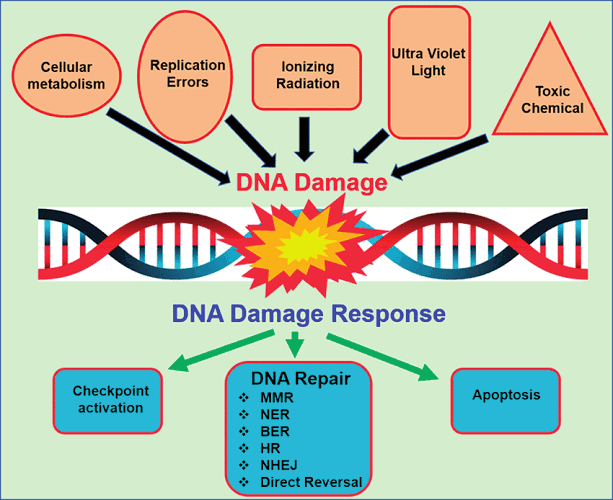
DNA Repair Genes and Cancer
When DNA repair genes malfunction, the risk of cancer increases dramatically. Key hereditary cancer syndromes include:
- Hereditary Breast and Ovarian Cancer (HBOC) Syndrome: Mutations in BRCA1 and BRCA2 impair the repair of double-strand breaks, increasing the risk of breast and ovarian cancers.
- Lynch Syndrome: Mutations in mismatch repair genes (MLH1, MSH2) result in a high risk of colorectal and other cancers.
- Xeroderma Pigmentosum (XP): Mutations in nucleotide excision repair genes make individuals susceptible to UV radiation, significantly increasing the risk of skin cancer.
- Fanconi Anemia: This disorder, caused by mutations in genes involved in repairing crosslinks, leads to chromosomal instability and a higher risk of cancer, especially leukemia.
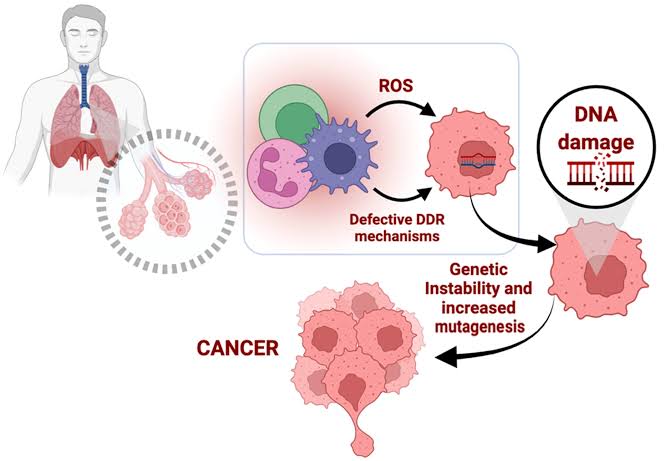
Therapeutic Implications: DNA Repair and Cancer Therapy
Understanding DNA repair defects has opened new avenues for cancer treatment:
- Targeted Therapies(e.g. PARP Inhibitors): PARP(poly ADP ribose polymerase) is an enzyme that plays a key role in DNA repair. In cancers with BRCA mutations, PARP inhibitors like Olaparib(Lynparza) exploit the cells’ reliance on specific DNA repair pathways, leading to cell death. This approach, known as synthetic lethality, has revolutionized treatment for patients, particularly those with HBOC syndrome.
- DNA Repair Inhibitors: inhibitors targeting specific DNA repair pathways can enhance the effectiveness of traditional therapies like chemotherapy and radiotherapy. Examples; Prexasertib(LY2606368); the drug targets the CHK1 kinase, which is involved in DNA damage response. Inhibiting CHK1 leads to the accumulation of DNA damage in cancer cells and forces the cells to die due to their inability to repair DNA damage.
- Ceralasertib(AZD6738): ATR(Ataxia telangiectasia and Rad3-related) is another kinase involved in the DNA damage response. By inhibiting ATR, this drug prevents cancer cells from repairing DNA damage, leading to cell death.
- Immunotherapy and DNA Repair Defects: Cancers with DNA repair defects often have high mutation rates, making them more visible to the immune system. Immunotherapies targeting these cancers are promising, with treatments like pembrolizumab (Keytruda) offering new hope for patients.
- Combination Therapies: Combining DNA repair inhibitors with traditional treatments like chemotherapy or radiation can enhance the overall therapeutic effect, like using multiple tools to tackle a difficult repair job.
- Screening and Prevention
Genetic testing can identify individuals at high risk for cancer due to DNA repair defects, allowing for early intervention and preventive measures. Regular screenings and lifestyle choices, such as avoiding smoking and excessive sun exposure, can reduce DNA damage and lower cancer risk.
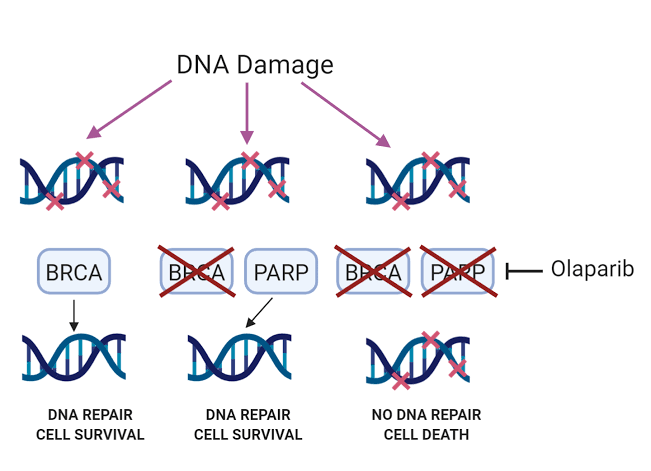
Conclusion: DNA Repair Genes as Protectors of the Genome
DNA repair genes play a critical role in safeguarding our genetic material, preventing mutations that could lead to cancer and other genetic disorders. Their role in maintaining genomic stability is vital, and understanding these processes has led to significant advances in cancer treatment. Ongoing research continues to uncover how these mechanisms can be harnessed to fight cancer and other genetic diseases. In the ongoing battle against these diseases, DNA repair genes remain one of our most powerful allies, offering hope for more effective treatments and improved patient outcomes.
Further Readings
JHJ Hoeijmakers. (2009). DNA Damage, Aging, and Cancer.
M.J O’Connor. (2015). Targeting the DNA damage response in cancer.
Jackson, S. P., & Bartek, J. (2009). The DNA-damage response in human biology and disease.
Lord, C. J., & Ashworth, A. (2016). BRCAness revisited.

